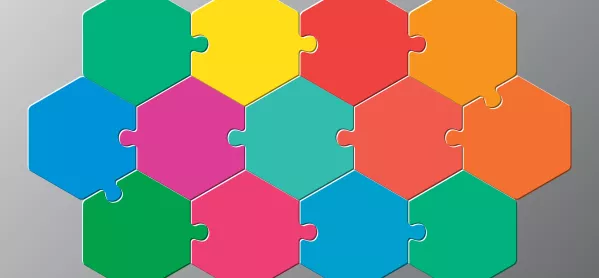13 ways to transform Scottish education

A 13-step wish list for Scottish education has emerged as a landmark consultation on the future of assessment, inspection and curriculum development draws to a close.
The consultation period of the Muir review - which will lead to the replacement of the Scottish Qualifications Authority (SQA) and reform of curriculum and inspection body Education Scotland - ends today.
The first consultation submission to emerge is that of the EIS, Scotland’s biggest teaching union, which sets out its hopes over 37 pages.
Background: SQA and Education Scotland reform team is revealed
Related: SQA and Education Scotland defend their performance
Education reform: We won’t scrap exams, says Somerville
Flashback to June: Why the OECD review needs to be taken seriously
The EIS sets out 13 “requirements” that would “support the genuine empowerment and autonomy of school communities to design curricula that meet the needs of their learners”.
13 steps to improve education in Scotland
They are:
1. Investment in smaller class sizes.
2. Investment in specialist additional support needs (ASN) teachers and support assistants.
3. Investment in ASN support areas such as EAL (English as an additional language), speech and language therapy, educational psychology and child and adolescent mental health services.
4. Investment in the school estate to bring about “learning spaces that meet the increasingly diverse and complex needs of learners”.
5. More money for play-based learning as well as “a move away from assessment approaches that are misaligned with this”.
6. “Decluttering” of curricula at a local level and less pressure on schools to satisfy “an ever-growing suite of national initiatives”.
7. Support for schools at a national level for curriculum design that will “support a diverse range of experiences and pathways for young people”.
8. Time for teachers to undertake high-quality professional learning that will suit the needs of learners in schools, which would take account of the “increasingly diverse nature of school communities in Scotland”.
9. Professional learning that informs teachers about a wider range of qualifications and pathways in the senior phase of secondary school.
10. More staff to help run a wider range of courses and learning experiences.
11. “Careful and consistent messaging to parents about the senior phase - what it is for and how it should differ from their own past experiences of upper secondary school”.
12. To stop putting schools in competition with each other, for example through inspection scores.
13. A “progressive alternative to inspection” that would involve teacher-led evaluation.
Last couple of days to add your views to Ken Muir’s consultation on the future structures of the Scottish education system - https://t.co/uB0BTiN5yt (deadline 26/11)
- Mark Priestley ?? (@MarkRPriestley) November 25, 2021
Make your voice heard. Please RT
The EIS submission also calls for the replacement for the SQA to be more akin to the General Teaching Council for Scotland (GTCS), in that “the majority of seats are held by teachers”.
And it makes a strong statement on exam reform, saying that “the death knell has been sounded on the unqualified continuation of the kind of high-stakes exam-based assessment that has driven the senior phase curriculum for far too long”.
The EIS also comes out strongly against any proposal for a joint curriculum and assessment agency, which would present “the very real risk that assessment will dominate the curriculum even more than at present”.
It highlights a “risk that SQA and Education Scotland are simply rebranded under the umbrella of a new organisation and the worst elements of each body combined and the new agency given too much power”.
The EIS states that any new national body “must be committed to ensuring much more effective communication with the teaching profession”.
It adds: “For some time, SQA communication has been poor on a number of fronts - often unclear, sometimes contradictory, lacking in transparency, difficult to source, and unwieldy in its volume when accessed. This is a barrier to the smooth delivery of courses for learners and adds considerably to the workload of teachers.”
You need a Tes subscription to read this article
Subscribe now to read this article and get other subscriber-only content:
- Unlimited access to all Tes magazine content
- Exclusive subscriber-only stories
- Award-winning email newsletters
Already a subscriber? Log in
You need a subscription to read this article
Subscribe now to read this article and get other subscriber-only content, including:
- Unlimited access to all Tes magazine content
- Exclusive subscriber-only stories
- Award-winning email newsletters



